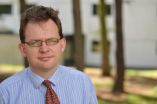(Press-News.org) Researchers from North Carolina State University and University of North Carolina at Chapel Hill have developed a new technique that uses sound waves to rapidly separate selected collections of cells for use in biomedical research.
"We think this is important because it will make it faster and easier for researchers to sort out the live cells they need for research ranging from disease study to drug development," says Dr. Xiaoning Jiang, an associate professor of mechanical and aerospace engineering and adjunct professor of biomedical engineering at NC State and co-author of a paper on the work.
Biomedical research often focuses on how specific cell types respond to various chemicals or environmental factors. These cells are often grown in a liquid medium and on top of a collection of "micropallets," which are essentially small plastic platforms that sit on the substrate at the bottom of the container. Researchers then select the cells they want and detach the relevant micropallets, which can be removed for additional experimentation or analysis.
VIDEO:
Researchers from North Carolina State University and University of North Carolina at Chapel Hill have developed a new technique that uses sound waves to rapidly separate selected collections of cells...
Click here for more information.
Current techniques for removing these micropallets rely on lasers or physical manipulation to separate the pallets from the substrate. But each approach has its drawbacks. Physical manipulation is a slow process, while the energy produced by lasers to release larger micropallets (e.g., a micropallet 500 micrometers in diameter) can inadvertently kill a significant number of the cells. Neither technique is efficient at detaching a significant number of large micropallets quickly.
The new technique from NC State uses ultrasound technology to release the micropallets. Specifically, it uses focused, relatively high-frequency sound waves that are translated into a wave of pressure within the substrate itself. When that wave of force hits a targeted micropallet, the pallet is lifted off the substrate and can be removed, together with its attached cells, for further study.
Using this technique, micropallets can be selectively released in less than a millisecond. This is not as fast as laser-based techniques, but is much faster than physical manipulation. However, the ultrasound technique has a viability rate of better than 90 percent, meaning that more than 90 percent of live cells survive the process. This is significantly better than existing techniques for the release of large-sized pallets, which can have viability rates of less than 50 percent.
INFORMATION:
The paper, "Ultrasound-Induced Release of Micropallets with Cells," was published online Oct. 16 in Applied Physics Letters. Lead author of the paper is Sijia Guo, a Ph.D. student at NC State. Co-authors are Jiang; Dr. Nancy Allbritton, head and professor of the joint Biomedical Engineering Department at NC State and the University of North Carolina at Chapel Hill and professor of chemistry at UNC; and Dr. Yuli Wang, a research associate in the Chemistry Department at UNC-Chapel Hill. The research was supported by a grant from the National Institutes of Health.
New technique for sorting live cells may expedite biomedical research
2012-10-17
ELSE PRESS RELEASES FROM THIS DATE:
Religious affiliation and residence in Muslim-majority nations influence sexual behavior
2012-10-17
WASHINGTON, DC, October 17, 2012 — Hindus and Muslims are less likely than Christians and Jews to have premarital sex, and Muslims are the least likely among people of these religious groups to have extramarital sex, according to a new study that analyzed data on premarital and extramarital sexual behaviors in over 30 developing countries around the world.
Co-authored by Amy Adamczyk, an Associate Professor of Sociology at John Jay College of Criminal Justice, and Brittany Hayes, a Ph.D. student in John Jay's Criminal Justice program, the study, "Religion and Sexual Behaviors: ...
Use of anti-psychotic drugs by people with dementia 'under reported'
2012-10-17
The scale of the challenge to reduce the use of anti-psychotic drugs by people with dementia may be under-estimated, according to researchers from Aston University and the University of East Anglia, working with NHS Kent and Medway.
There is a key public health challenge to reduce the prescribing of anti-psychotic drugs to people with dementia as they are thought to be associated with up to 1,800 deaths a year.
Ian Maidment, corresponding author and a Senior Lecturer in Clinical Pharmacy from Aston University has worked in medication management in dementia for 20 ...
In blown-down forests, a story of survival
2012-10-17
In newscasts after intense wind and ice storms, damaged trees stand out: snapped limbs, uprooted trunks, entire forests blown nearly flat.
In a storm's wake, landowners, municipalities and state agencies are faced with important financial and environmental decisions.
A study by Harvard University researchers, supported by the National Science Foundation (NSF) and published in the journal Ecology, yields a surprising result: when it comes to the health of forests, native plants and wildlife, the best management decision may be to do nothing.
Salvage logging is a ...
Moffitt Cancer Center researchers study 'ACT TIL' approach to treating metastatic melanoma
2012-10-17
Researchers at Moffitt Cancer Center have carried out a clinical trial in which patients with metastatic melanoma were given chemotherapy and an immunotherapy of adoptive cell transfer (ACT) with tumor infiltrating lymphocytes (TIL). Tumor tissues were surgically removed from patients, minced and grown in culture. The treatment combined chemotherapy, then ACT with TIL, followed by interleukin-2 (IL-2). The combination therapy drew a high response rate from some patients.
The study appears in the October issue of the Journal of Immunotherapy.
"Our purpose was to demonstrate ...
Calcium reveals connections between neurons
2012-10-17
CAMBRIDGE, MA -- A team led by MIT neuroscientists has developed a way to monitor how brain cells coordinate with each other to control specific behaviors, such as initiating movement or detecting an odor.
The researchers' new imaging technique, based on the detection of calcium ions in neurons, could help them map the brain circuits that perform such functions. It could also provide new insights into the origins of autism, obsessive-compulsive disorder and other psychiatric diseases, says Guoping Feng, senior author of a paper appearing in the Oct. 18 issue of the journal ...
Doctors who go digital provide higher quality healthcare
2012-10-17
The use of electronic health records is linked to significantly higher quality care, according to a new study¹ by Lisa Kern and her team, from the Health Information Technology Evaluation Collaborative in the US. Their work appears online in the Journal of General Internal Medicine², published by Springer.
Electronic health records (EHRs) have become a priority in the US, with federal incentives for 'meaningful' use of EHRs. Meaningful use entails tracking and improving specific patient outcomes, as well as gathering and storing information.
Kern and colleagues examined ...
Does true love wait? Age of first sexual experience predicts romantic outcomes in adulthood
2012-10-17
It's a common lament among parents: Kids are growing up too fast these days. Parents worry about their kids getting involved in all kinds of risky behavior, but they worry especially about their kids' forays into sexual relationships. And research suggests that there may be cause for concern, as timing of sexual development can have significant immediate consequences for adolescents' physical and mental health.
But what about long-term outcomes? How might early sexual initiation affect romantic relationships in adulthood?
Psychological scientist Paige Harden of the ...
Tiny travelers from deep space could assist in healing Fukushima's nuclear scar
2012-10-17
LOS ALAMOS, N.M., Oct. 17, 2012 — Researchers from Los Alamos National Laboratory have devised a method to use cosmic rays to gather detailed information from inside the damaged cores of the Fukushima Daiichi nuclear reactors, which were heavily damaged in March 2011 by a tsunami that followed a great earthquake.
In a paper in Physical Review Letters, researchers compared two methods for using cosmic-ray radiography to gather images of nuclear material within the core of a reactor similar to Fukushima Daiichi Reactor No. 1. The team found that Los Alamos' scattering method ...
Progress in Cell-SELEX compound screening technology reviewed in BioResearch Open Access
2012-10-17
New Rochelle, NY, October 17, 2012—SELEX is a rapid, efficient, and iterative high-throughput method for screening large libraries of molecules to identify those with the potential to be developed as drug compounds or research tools. Advances in SELEX technology that have enabled screening in live cells, called Cell-SELEX, are explored in a comprehensive Review article published in BioResearch Open Access, a bimonthly peer-reviewed open access journal from Mary Ann Liebert, Inc. The article is available free on the BioResearch Open Access website.
Cell-SELEX uses live ...
Developing the next generation of microsensors
2012-10-17
PASADENA, Calif.—Imagine navigating through a grocery store with your cell phone. As you turn down the bread aisle, ads and coupons for hot dog buns and English muffins pop up on your screen. The electronics industry would like to make such personal navigators a reality, but, to do so, they need the next generation of microsensors.
Thanks to an ultrasensitive accelerometer—a type of motion detector—developed by researchers at the California Institute of Technology (Caltech) and the University of Rochester, this new class of microsensors is a step closer to reality. Beyond ...




